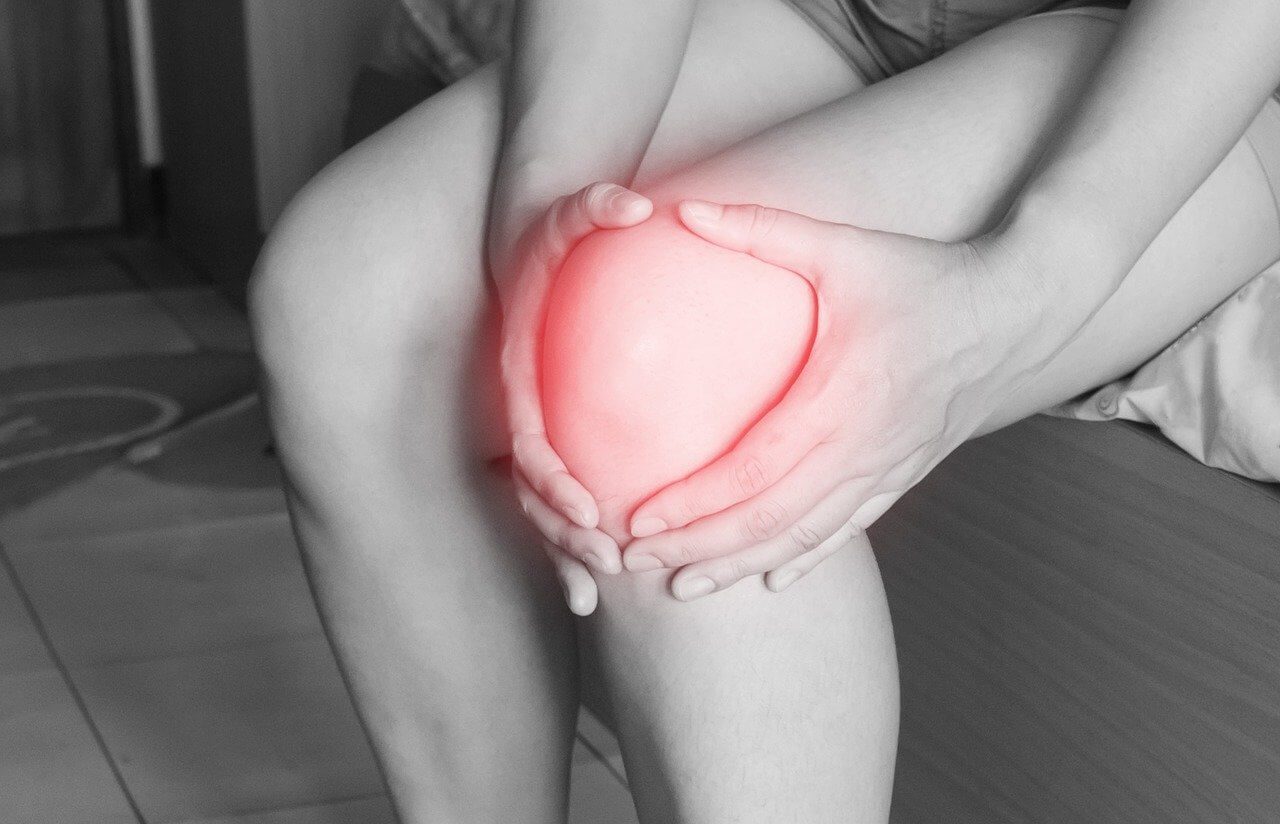How to Prevent Knee Pain While Hiking.
Many people often suffer from knee pain. Sometimes, knee pain can be so severe that it prevents us from enjoying fun activities such as hiking and running.
For some people, certain movements can trigger knee pain. Suffering from knee pain, depending on its severity, often takes a lot of the joy out of life.
In order to better understand how to prevent knee pain while hiking, we must take a closer look at the components of the knee. We must also understand why people experience knee pain and how hiking can trigger it.
Components of the knee.
The knee joint, which is a modified hinge joint, allows us to bend and extend our leg. In addition to extension and flexion, we are also able to slightly rotate our leg, both internally and externally.
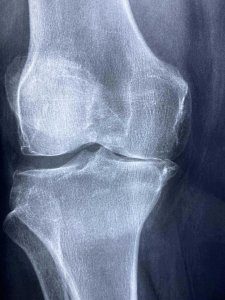 The knee consists of a number of ligaments and tendons that connect the femur and the tibia, in a way that enables movement (Vaienti, Scita, Ceccarelli, & Pogliacomi, 2017). The medial collateral ligament (MCL), lateral collateral ligament (LCL), posterior cruciate ligament (PCL) and the anterior cruciate ligament (ACL) are the main ligaments in the knee (“Types of Knee Ligaments”, n. d.).
The knee consists of a number of ligaments and tendons that connect the femur and the tibia, in a way that enables movement (Vaienti, Scita, Ceccarelli, & Pogliacomi, 2017). The medial collateral ligament (MCL), lateral collateral ligament (LCL), posterior cruciate ligament (PCL) and the anterior cruciate ligament (ACL) are the main ligaments in the knee (“Types of Knee Ligaments”, n. d.).
The medial and lateral collateral ligaments help to stabilize the inner and outer knee, respectively. The anterior cruciate ligament controls the forward movement and rotation of the tibia. On the other hand, the posterior cruciate ligament is responsible for controlling the backward movement of the tibia (“Types of Knee Ligaments”, n. d.).
The knee also contains two disks, which are called menisci. The menisci serve as shock absorbers in addition to keeping the bones from rubbing on each other. Additionally, there are two main tendons in the knee, which are the quadriceps tendon and the patellar tendon.
Why do people experience knee pain?
As you now know, there are a number of different ligaments and tendons that make up the knee. Our knees have to support a lot of our weight whenever we do any activities that involve moving our legs, such as hiking, which makes them vulnerable to injuries.
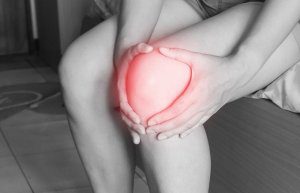 Some people experience knee pain as a result of injury and trauma to the joint, particularly when the knee is suddenly and forcefully rotated or bent.
Some people experience knee pain as a result of injury and trauma to the joint, particularly when the knee is suddenly and forcefully rotated or bent.
People can also get knee injuries from lateral trauma to the knee or when a sudden force causes the knee to bend in the opposite way. Misalignment, degeneration, overuse, and muscle imbalances can also cause knee pain.
Sometimes, medical conditions such as arthritis can cause knee pain. Obesity can also sometimes cause knee pain because there is only so much load that a knee can take before you start to experience discomfort in the joint.
Patellofemoral syndrome is also a very common knee disorder, caused by a problem between the femur and the kneecap (Callaghan & Selfe, 2012). Illiotibial band syndrome is another possible cause of knee pain which is an injury resulting from overuse and irritation of the iliotibial band.
Why can hiking trigger knee pain?
If you have had previous knee injuries, you are more likely to experience knee pain when hiking. Also, if you are overweight and you decide to go on an intense hike, you may experience knee pain when you go up or down a hill.
If you don’t have any serious medical conditions that affect your knee, then the most likely source of knee pain while hiking is a patellofemoral syndrome. It typically affects both runners and hikers.
Patellofemoral pain typically comes on gradually and you will usually feel it at the front of the knee (Dutton, Khadavi, & Fredericson, 2016). If you suddenly increase the intensity of your hike and you have a weak quadriceps muscle, you are more likely to experience knee pain.
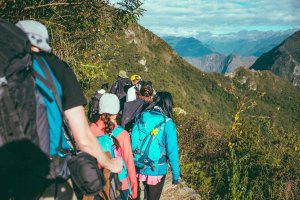 Hiking may involve a lot of repetitive motion, whether you are going uphill or downhill, which may cause knee pain due to overuse, particularly if you are not accustomed to this level of physical activity.
Hiking may involve a lot of repetitive motion, whether you are going uphill or downhill, which may cause knee pain due to overuse, particularly if you are not accustomed to this level of physical activity.
Going downhill, however, puts a lot more stress on your knees. When you go downhill, the force on your knees is nearly eight times your body weight.
The uneven terrain of some hiking trails may also cause you to move your knees in a way that they are not supposed to be moved, which puts a strain on the ligaments that stabilize the knee.
If you experience knee pain when you go up a hill, then you are most likely suffering from iliotibial band syndrome. When you go up a hill, not only do you put a lot of weight on the knee, but you are also constantly bending it, which can irritate your iliotibial band.
How to prevent knee pain while hiking?
There are a number of ways to help prevent knee pain while hiking. First, if you are overweight and have been sedentary for a long time, try to find a less intense and shorter hiking trail so that you can get used to the activity. As you get fitter, you will gradually be able to handle more intense hikes.
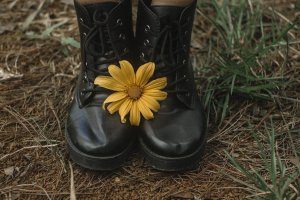 Therefore, it is important not to overdo it and allow yourself some time to recover from your hikes.
Therefore, it is important not to overdo it and allow yourself some time to recover from your hikes.
You should also invest in high quality, comfortable pair of hiking shoes that have some cushioning to help absorb the impact of each step.
If you suspect you may have any muscular imbalances that cause knee pain, then you should see a physiotherapist who can prescribe you some exercises to strengthen the muscles around your knee joint.
Strong muscles around your knee joint will help to stabilize it and reduce the risk of injury. You may also want to use hiking poles.
 Hiking poles will help you keep your balance as you go up or down the hill and they will also take some weight off your knees.
Hiking poles will help you keep your balance as you go up or down the hill and they will also take some weight off your knees.
In addition, if your knee is really bothering you, then you can use a knee brace.
However, you should work on strengthening your knees so you don’t become dependent on the knee brace.
In addition to hiking, you should do strength training and stretching throughout the week. You should also stretch after your hike to keep your joints flexible and limber to reduce your risk of injury.
Conclusion.
As you can see, the knee is very vulnerable to injury and many people suffer from knee pain when hiking, particularly if they go up or down a hill.
Patellofemoral syndrome and iliotibial band syndrome are the two most common reasons why people experience knee pain.
There are several ways to help prevent knee pain when hiking, including wearing proper shoes, moderating the intensity of the hike, using a knee brace (if necessary), investing in some hiking poles, as well as strengthening the muscles surrounding your knee joint.
REFERENCES:
- Callaghan, M. J., & Selfe, J. (2012). Patellar taping for patellofemoral pain syndrome in adults. The Cochrane database of systematic reviews, (4), CD006717.
- Dutton, R. A., Khadavi, M. J., & Fredericson, M. (2016). Patellofemoral Pain. Physical medicine and rehabilitation clinics of North America, 27(1), 31–52. R
- Stanford Health Care (n. d.).Types of Knee Ligaments.
- Vaienti, E., Scita, G., Ceccarelli, F., & Pogliacomi, F. (2017). Understanding the human knee and its relationship to total knee replacement. Acta bio-medica : Atenei Parmensis, 88(2S), 6–16.
